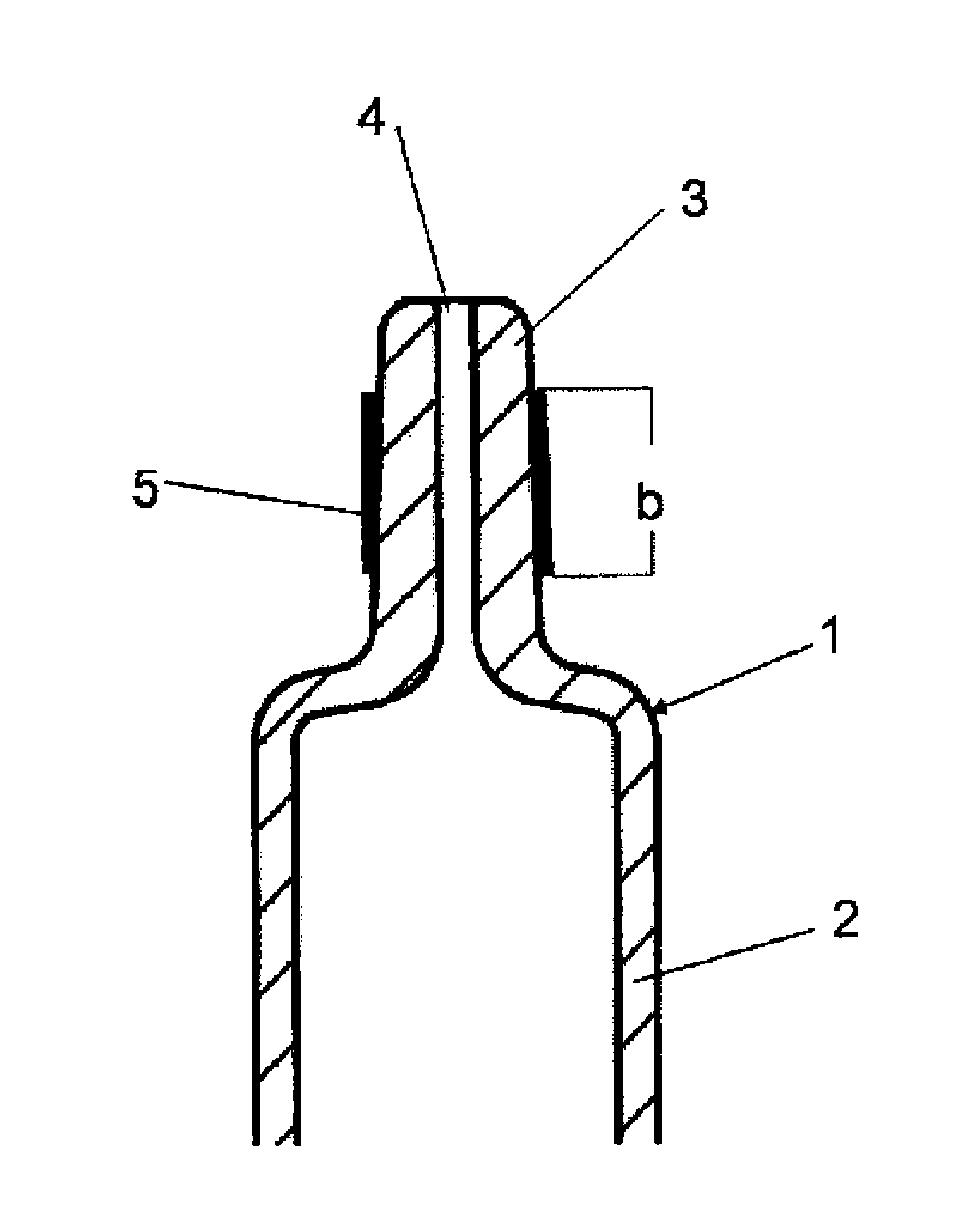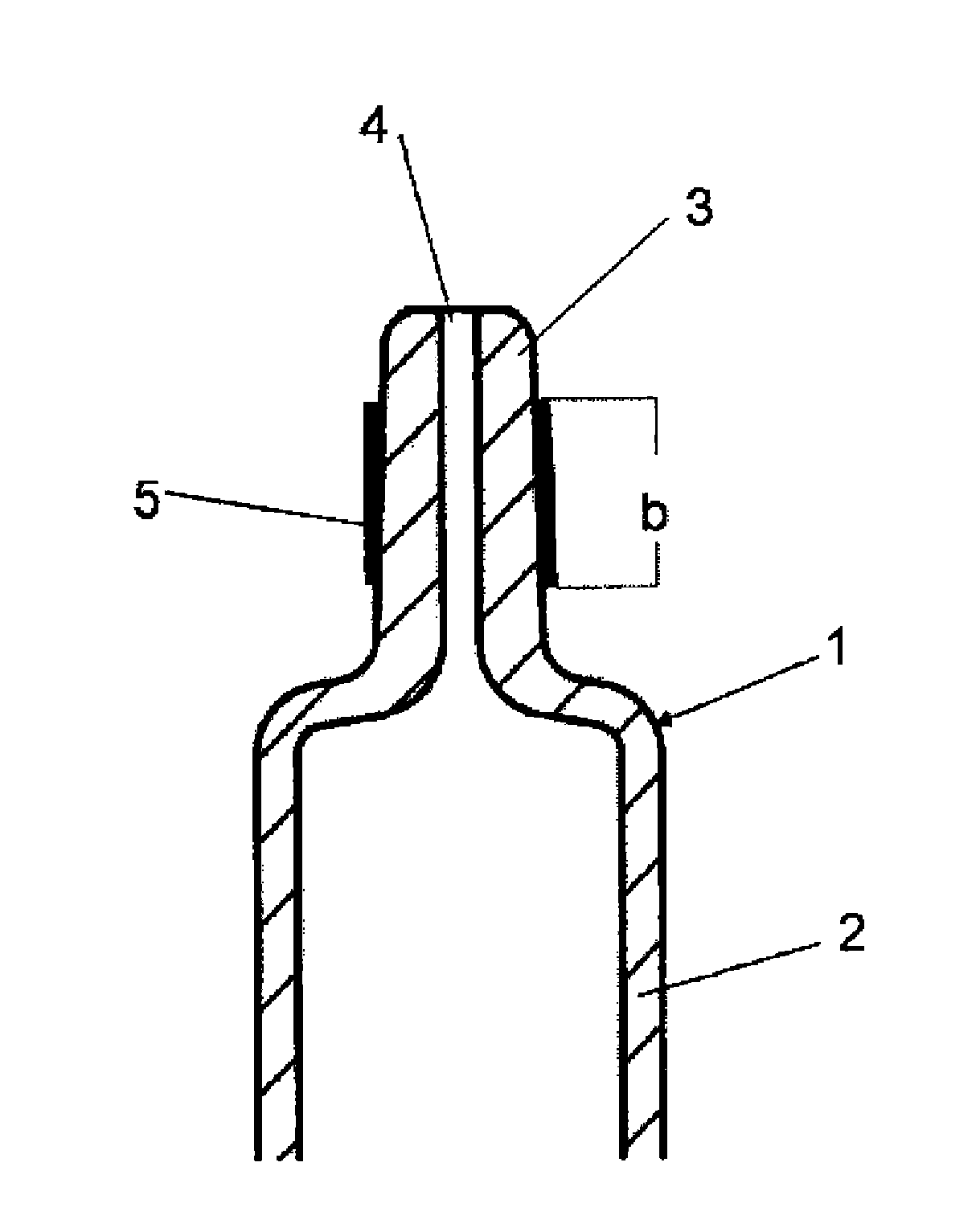Borosilicate glass syringe with cone coating that increases surface roughness
a borosilicate glass and cone coating technology, applied in the field of syringes, can solve the problems of insufficient matching of the expansion of the ink coating to the borosilicate glass, difficult production and processing of lead containing glass frits, and easy cracking of the substrate glass, so as to achieve the effect of inert behavior
- Summary
- Abstract
- Description
- Claims
- Application Information
AI Technical Summary
Benefits of technology
Problems solved by technology
Method used
Image
Examples
Embodiment Construction
[0066]The sole FIGURE shows the front section of a glass syringe 1 with cylinder 2, cone 3, outlet channel 4 and circumferential cone coating in longitudinal section. A typical dimension of the circumferential cone coating would be a width b of 5 mm. If the coating 5 is, as shown, arranged in the central, middle region of the glass cone, this is particularly advantageous for the function and handling when attaching adapters and sealing caps.
[0067]In the case of this configuration of the cone coating, deviations in the roughness, e.g. as a result of fluctuating baking temperatures or layer thicknesses, are very readily visible under appropriate lighting conditions and can be utilized for the final quality control of the coated syringes.
[0068]The present invention is illustrated by the following examples.
[0069]The glass compositions for the glass frits of Table 1 were melted from conventional industrial mixed raw materials. After melting and homogenization of the glass melt at tempera...
PUM
| Property | Measurement | Unit |
|---|---|---|
| roughness | aaaaa | aaaaa |
| roughness | aaaaa | aaaaa |
| roughness | aaaaa | aaaaa |
Abstract
Description
Claims
Application Information
 Login to View More
Login to View More - R&D
- Intellectual Property
- Life Sciences
- Materials
- Tech Scout
- Unparalleled Data Quality
- Higher Quality Content
- 60% Fewer Hallucinations
Browse by: Latest US Patents, China's latest patents, Technical Efficacy Thesaurus, Application Domain, Technology Topic, Popular Technical Reports.
© 2025 PatSnap. All rights reserved.Legal|Privacy policy|Modern Slavery Act Transparency Statement|Sitemap|About US| Contact US: help@patsnap.com



